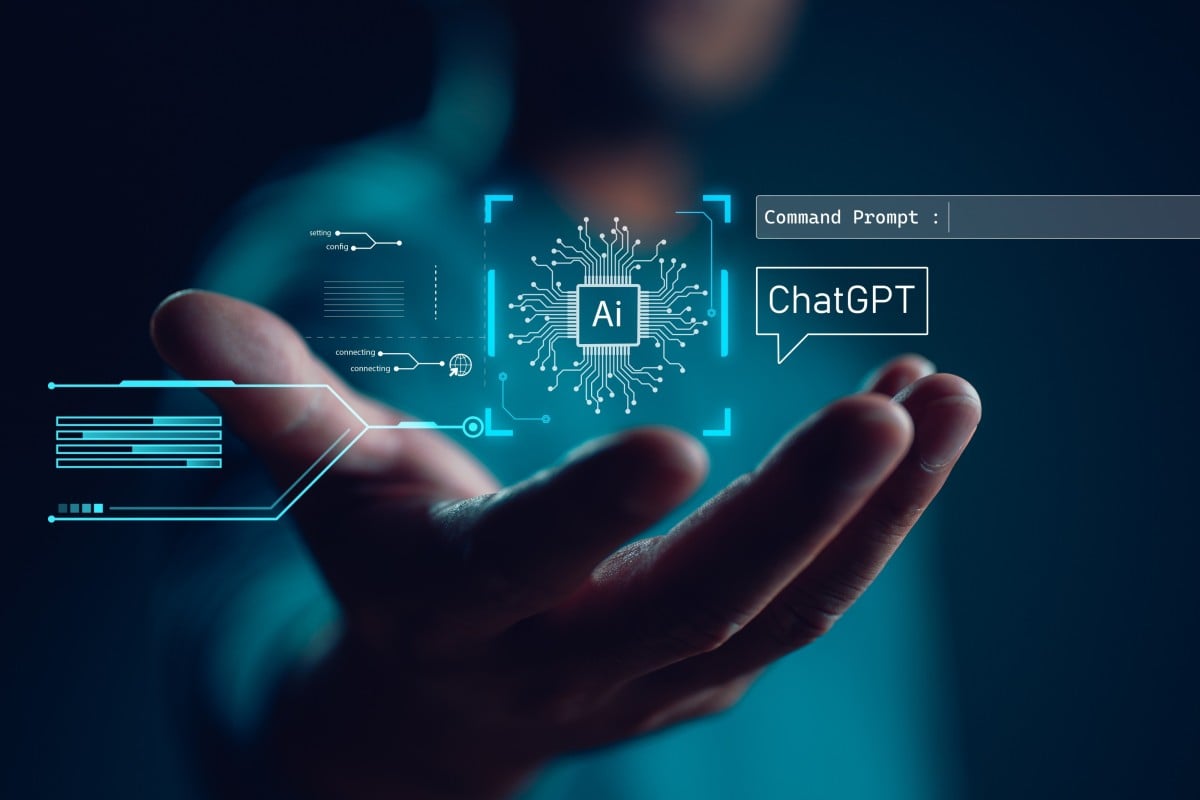
- Tommie Lo, founder and CEO of ed-tech company Preface, explains the vast potential and sobering limits of this trail-blazing artificial intelligence technology
- Every week, Talking Points gives you a worksheet to practise your reading comprehension with exercises about the story we’ve written
 Generative artificial intelligence creates responses to users’ prompts based on the models it has been trained on. Photo: Shutterstock
Generative artificial intelligence creates responses to users’ prompts based on the models it has been trained on. Photo: ShutterstockThe ability of computer programs like ChatGPT to craft sophisticated conversations has generated quite a lot of chatter. The artificial intelligence platform has become the fastest-growing consumer application by reaching 100 million monthly active users just two months after its launch last November.
But how does this chatbot work? Why is everyone talking about it? How can teens use it inside and outside the classroom?
Tommie Lo, founder and CEO of ed-tech company Preface, shares his insights on how generative AI, the technology behind ChatGPT, will forever change the education and work of the next generation.
Is there anything generative AI can’t do?
ChatGPT is short for “Chat Generative Pre-trained Transformer”. The program is a form of generative artificial intelligence, meaning that it creates responses to users’ prompts based on the models and massive data sets it has been trained on.
When asked what it could do, ChatGPT touted itself as a “versatile tool that can be used for a wide range of applications”. Not only can it answer complicated questions and assist with writing emails or essays, but the chatbot can even plan a holiday itinerary, compose captions for images and produce creative content.
“ChatGPT is not limited to producing lengthy answers to factual questions,” Lo emphasised. “Some cool out-of-the-classroom usage includes playing a text-based role-playing game [and] getting relationship advice.”
The CEO added that ChatGPT could be combined with Dall-E, a generative AI tool that creates images based on text prompts, to produce music videos. “This can be incredibly useful for teens who ... [want] novel ways to present their school project.”
How will AI change the world?
Lo cautioned about potential copyright issues that could arise with generative AI, especially when using it to create images. AI art platforms such as Dall-E and Lensa have come under fire because they train using databases of art found online but do not credit or compensate the artists who created the original artwork.
“We are actually at a very crucial juncture ... where copyright laws concerning such content are being defined,” Lo explained.
It’s not just artists who are treading new ground as generative AI threatens their livelihoods. Financial analysts, web designers and lawyers are among those who will also face significant changes in their work.
“Back in the day, I had to pay a lawyer around HK$6,000 per hour for a 20-hour analysis of one legal document, and now, I simply put it on ChatGPT to get an on-par analysis,” Lo said.
“This is the extent to which generative AI will transform jobs.”
Educators, students discuss how ChatGPT is changing the future of learning
Why education needs to adapt
Generative AI has also prompted a shift in what should be taught in schools and how to prepare students for the future.
“Some schools have banned the use of ChatGPT, but that’s just counterproductive,” said Lo, who believes that generative AI has a lot to offer to teachers and pupils.
To show how technology has always been changing education, Lo pointed out how US maths teachers took to the streets in 1986 to protest the use of calculators in primary school classrooms. “Now, they are an integral part of examinations,” he stressed.
Lo pointed out that educators could use AI tools to prepare personalised lesson materials, while having more time to focus on their instruction.
“That’s only the beginning,” he shared. “We need to jump on the bandwagon now and make the best of this technology because it won’t be too long before deep-learning models have the ability to ... produce entirely new content.”
Students also need to learn how to use generative AI, which is likely to become part of almost every industry while also forging new career paths.
“Jobs such as prompts engineering will be in demand,” Lo said, explaining the need for specialists who could ask AI the best questions to generate more accurate and creative content.
He added that this was exactly why educators and students should embrace generative AI. “Going forward, the way students approach education and information will be very different.”
Use our printable worksheet or online interactive exercises to test your understanding of this story.
